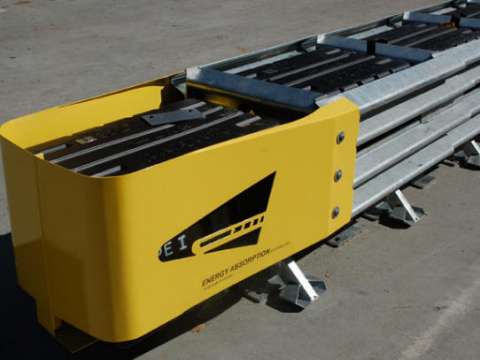QUADGUARD®II CRASH CUSHION

QUADGUARD®II CRASH CUSHION family has evolved again! Using the existing framework of the QuadGuard, the QuadGuard II provides TL-2 and TL-3 protection using less length.
The TL-2 QuadGuard II is 25% shorter than the original QuadGuard measuring less than 3m (10’). The TL-3 model is also nearly a meter, 3 feet, shorter than its predecessor.
The only modifications are the addition of the revolutionary Steel Nose, and the monorail Guide Stabilizers. The remaining components are identical to the existing NCHRP 350 systems that have been installed globally since the mid 1990’s.
The QuadGuard II will telescope rearward on head-on impacts by both the light car and the high center-of-gravity pickup truck at speeds up to 100 km/h (62 mph) and safely redirect errant vehicles on impact up to 20 angles into the side of the unit without gating.
- LESS is MORE!
- QuadGuard II has up to 25% less footprint
- reducing installation cost
- Steel Nose provides excellent visibility
- Majority of system is identical to QuadGuard reduced inventory requirements
- Shorter Systems are less likely to be impacted
- Offers hazard protection from 40 km/h (25mph)to 115 km/h to (70mph)
The design of the QuadGuard II does an excellent job of minimizing debris affecting other vehicles in the roadway.
The QuadGuard® Family also includes systems to meet Europe's EN-1317-3 Criteria
- QuadGuard CEN Crash Cushion Family
During head-on impacts, the QuadGuard® System telescopes rearward and crushes the cartridges to absorb the energy of impact.
When impacted from the side, the QuadGuard® System redirects the errant vehicle back toward its original travel path without allowing gating.
Quad-Beam panels provide 30% higher beam strength than thrie beam panels.
Monorail base eliminates the need for chains and cables providing excellent redirective capability.
Self-supporting nose means no legs to complicate installation and maintenance. Optional Flex-Belt Nose available.
Replaceable cartridge contains impact debris, avoiding loose parts that may cause secondary accidents.



